Verdict
The Watch GT 4 is one of Huawei’s best smartwatches, with solid fitness tracking features, smartwatch-focused features and a sleek and tasteful design. The newer Watch GT 5 offers improved tracking performance, but the GT 4 remains a solid buy if it’s found at a discount.
Pros
- Attractive design
- Slick Harmony OS watch software
- Good battery life
Cons
- New health and fitness features are a mixed bag
- App store still doesn’t match rivals
- Not a radical upgrade from GT 3
-
46mm and 41mm case size options:With seven colourways in total -
TruSeen 5.5+ HR sensor:Improved heart rate tracking -
Runs on HarmonyOS:Huawei’s own operating system
Introduction
The Huawei Watch GT 4 remains a capable fitness-focused smartwatch, even with the release of the newer Huawei Watch GT 5.
The GT series was Huawei’s flagship until the Huawei Watch turned up, so with the GT 4 it’s about offering largely the same core experience in two size options with more fitness and health features and the same promise of weeks (as opposed to days) of battery life.
The newer Watch GT 5, meanwhile, offers more in-depth running tracking with running form analysis, as well as an improved TrueSense system with more accurate HR tracking and improved GPS capabilities to boot.
However, the Watch GT 4 can now be found for much less than its £229 price tag, making it just as tempting, if not more tempting, for budget-focused smartwatch fans who want plenty of bang for their buck. Here are our thoughts on the Huawei Watch GT 4.
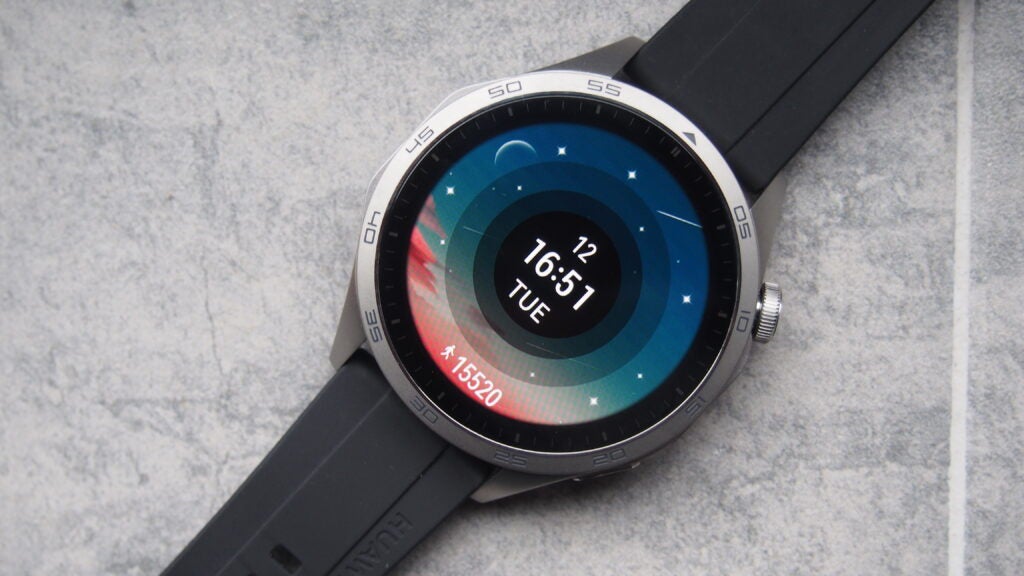
Design and screen
- 46mm and smaller 41mm case sizes
- AMOLED display
- Waterproof up to 50 metres
Like the Watch GT 3, the GT 4 comes in two case sizes, with Huawei sticking to the same larger 46mm version and dropping from 42mm to a 41mm version for those who prefer a less hulking watch to wear.
I had the 46mm version to test out with its silver metal case and bezel matched up with a polymer case back. There are four different versions of the 46mm GT 4 in total, compared to the three available for the 41mm sized option. The steel version pictured comes with a metal link bracelet strap that arrived too big for my skinny wrists, with additional links included to allow you to adjust the fit. Thankfully, I was provided with an additional rubber strap (which isn’t included in the box), to make it a more comfortable watch to wear day and night, and when exercising.
Weight-wise, the 46mm GT 4 comes in at 48g (minus the strap), so that’s a touch heavier than the same-sized Watch GT 3 (42g) and at 10.9mm thick, it’s only slightly slimmer as well. It boasts a good weight and thickness for a watch and it never felt bulky during my time with, so Huawei seems to have struck a good balance here.
It definitely now has more in common with the Watch GT 3 Pro as opposed to the GT 3 in terms of looks, moving to a more traditional watch design where the latter watch had an attractive yet more understated look about it. If you like the idea of wearing something with classic watch design aspirations, then you’ll appreciate what the GT 4 has to offer.
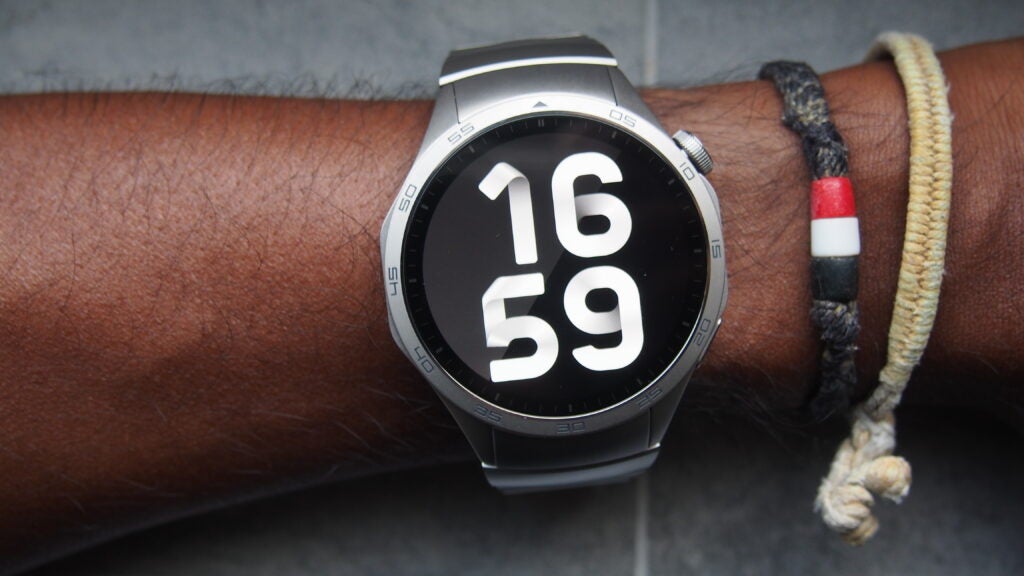

In terms of controls, Huawei has stuck to a twisting crown up top and a flatter physical button just below on the right-hand side of the case. That joins a 1.43-inch 466 x 466 AMOLED touchscreen, which is the same sized display and resolution found on the GT3. That means that it doesn’t get the newer LTPO display technology featured on the Watch 4 Pro. Huawei puts great displays on its watches and it’s no different on the GT 4. If you like an AMOLED screen that’s responsive to swipes, taps and presses, offers rich colours, good viewing angles and can be kept on at all times then that’s most certainly what you get here.
The waterproofing remains the same as well, with Huawei sticking to a rating that makes it safe for pool and open water swimming up to 50 metres depth, but it lacks the diving-proof credentials associated with the Watch 4 Pro and the Watch Ultimate.
Performance and software
- HarmonyOS brings UI tweaks
- AppGallery store still feels underwhelming
- Can handle Bluetooth calls from 100 metres
The GT 4 runs on the latest version of Huawei’s HarmonyOS, which means it benefits from the user interface changes Huawei showcased on the Watch 4 Pro. You can now fill cards (screens) with your most frequently used apps and there’s dedicated cards for health monitoring and sports tracking modes as well.
Like the Watch 4 Pro, I don’t think these changes will revolutionise how you’ll use the GT 4, but it does mean that you can avoid scrolling through the main app screen as often to find the features you want to use in a pinch.
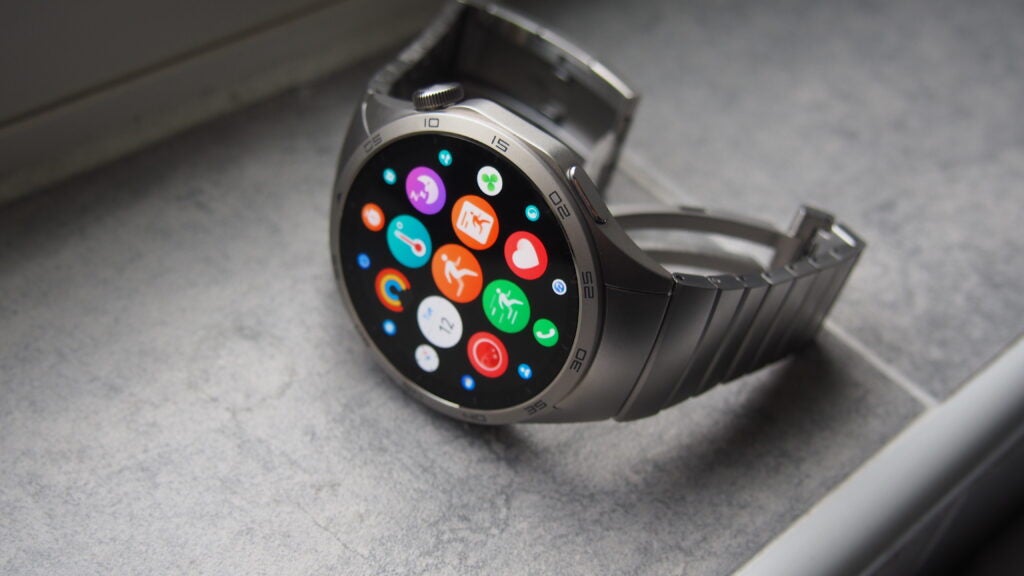

The core smartwatch experience doesn’t feel different from the GT 3. You can view notifications from paired iOS and Android devices, change watch faces and download more from the Huawei Health app. You don’t have the eSim functionality included on the Watch 4 Pro, but you can make calls over Bluetooth, with a range of up to 100 metres away from your phone.
There’s Huawei’s Celia smart assistant, music playback controls and a music player for Android users to access. You can also dive into the Huawei AppGallery store from the companion app, as opposed to the watch itself, to sync over third-party apps that download and install onto the watch in a speedy fashion.
Huawei’s app store has been live for a few years now, however things haven’t changed as much as I’d expected it to on the app selection front. There’s still a distinct lack of big-name apps here and I found myself seeing and downloading the same apps as when it first went live on a Huawei smartwatch.
Aesthetically, and from an intuitiveness point of view, HarmonyOS on the GT 4 works well and is generally a nice operating system to interact with. It just feels that in parts it’s still not as mature as I’d hoped it would be. Features like the music player, payment and app support and to a lesser extent the smart assistant integration just don’t feel on par or as slick as what Apple and Samsung can offer.
The notification support remains solid with scope to reply to messages, as do features like weather updates and the general zippiness of HarmonyOS, but it doesn’t feel like a huge leap from what we got on the GT 3.
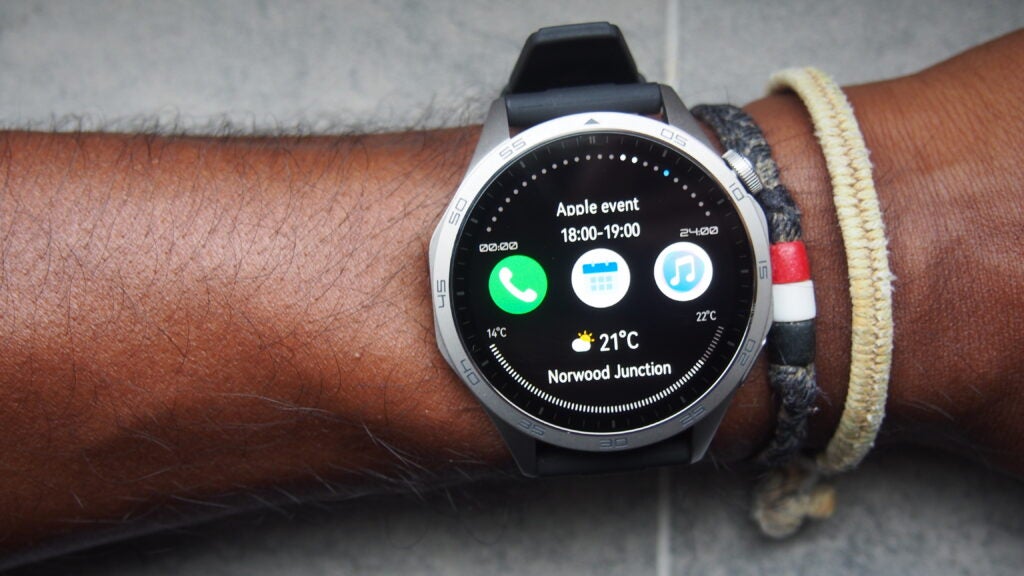

Tracking and features
- TruSeen 5.5+ HR sensor
- Scientific calorie tracker
- New fitness tracking medals and badges
Somewhere Huawei has made good progress with its watches is sports and general fitness tracking. If you compare it to most other Android-friendly smartwatches, including Samsung, it offers a really strong set of features and delivers good tracking accuracy performance as well. For the GT 4, Huawei seems to have focused on bolstering that tracking accuracy and doing a better job of motivating you to keep moving on a regular basis.
Starting with fitness tracking, it follows the Watch 4 Pro by introducing new activity rings based on World Health Organisation recommendations. It’s also added new 3D medals that you can inspect and interact with onscreen when you complete challenges like closing activity rings for seven consecutive days or taking on your first 5km run.
I’ve been using the Huawei Watch GT 4 alongside the Oura Ring Gen 3, Ultrahuman Ring Air and a Garmin Forerunner 965 sports watch to compare fitness tracking stats and found that daily step counts were nicely in line with distance tracked by those other wearables.
It’ll also track your sleep and display sleep scores, break down sleep stages on the watch and capture naps – handy if you want to catch a quick bit of shut-eye. I compared sleep stats to the Oura Ring Gen 3, one of the most reliable sleep trackers I’ve tested, and found the sleep times and durations were pretty similar as well as sleep scores and registering REM sleep stages. The sleep data in general felt solid overall.


Something Huawei has added is its new ‘scientific calorie counter’, where you’ll need to manually input meals and calories in the Weight section of the Health app, after which the Watch can send calorie alerts in conjunction with workout tracking to achieve a good balance between food intake and exercise. I have never really got on with these types of meal-tracking approaches and the necessity to manually input meals without a database of foods included, not to mention trying to work out the calories myself, instantly felt like a chore. Adding this sort of feature could be useful, but it needs some work.
To improve sports tracking Huawei has upgraded several key features, moving to its new TruSeen 5.5+ heart rate monitoring algorithm which promises better accuracy for activities like running, faster blood oxygen readings and better heart rate performance in colder conditions. It is worth pointing out however that you don’t get the ECG sensor you will find on the Huawei Watch 4 Pro or the Watch GT 3 Pro.
After adding dual-band GNSS support on the Watch 3 Pro, Huawei has sought to improve its performance by adding what it calls Inew Sunflower GPS, which apparently adjusts its signals with the satellite systems it’s communicating with to match movement when in orbit to ultimately improve that dual-band GNSS support.
Starting with heart rate data, and for continuous monitoring, I found the metrics to be within 3-4 bpm from similar tracking on a Garmin watch and the Oura Ring Gen 3. During exercise, I was pleasantly surprised to see that the GT 4 was within 1 bpm of average and max readings and posted similar graphs to a chest strap monitor on most of my workouts.


On the GPS front, I’ve had a mixed experience with Huawei’s approach to adding dual-band GNSS support to its watches. It was pretty good on my outdoor runs with the GT4, up against the very good multiband mode on Garmin’s latest sports watches. Metrics like average pace and distance covered were nicely in line with that wearable and a closer look at the mapped routes, aside from some more rigid-looking areas, did tell the same story about the run overall.
Battery life
- Up to 14 days battery life (46mm)
- No power-saving features
- Same charging setup as GT3
The state of play in terms of battery performance on the GT 4 hasn’t changed from the GT 3, especially if you opt for the 46mm model that I tested. Huawei promises up to 14 days and it can deliver that as long as you’re not regularly using features like GPS-based workout tracking, all of the available continuous health monitoring modes and a mixture of the always-on display mode and raise-to-wake gesture support.
I saw around 10% battery drop off per day, which works out to 10 days of use. That’s still a good showing and indicates that Huawei still knows how to make its smartwatches go for at least a week. To put that into context with Huawei’s other smartwatches, the Huawei Watch 4 Pro managed anywhere from 4.5 to 5 days.
I think in more intensive use you’re getting a good week out of it. Huawei also doesn’t specify GPS battery numbers, but based on my experience I’d say that it’s a similar result to the GT 3, so around the 10-15 hour mark. An hour’s worth of outdoor running saw battery drop by just under 10%, so it’s not quite a GPS battery powerhouse, but it should give you enough to cover a good amount of position tracking over a week.
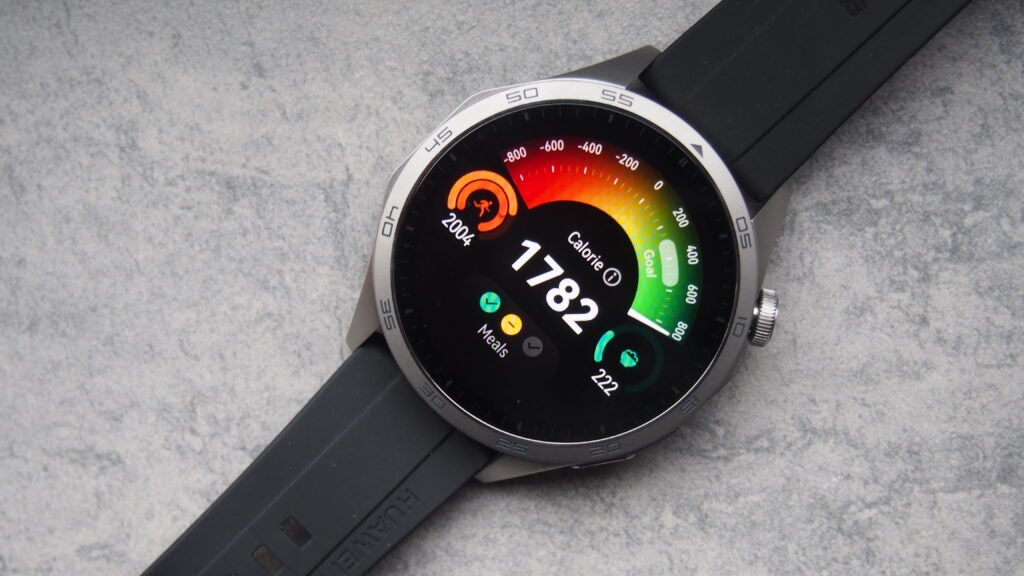

Latest deals
Should you buy it?
You want the best value Huawei smartwatch
The Watch 4 Pro is a good, but pricier Huawei smartwatch to pick up, so if you want most of its functionality in a nice design for less then grab this instead.
You want the best smartwatch
For all of its obvious design and fitness tracking qualities, the Huawei Watch GT 4 still doesn’t feel as slick as a similarly priced Apple Watch or Samsung Galaxy Watch when you want to use its core smartwatch features.
Final Thoughts
Huawei has launched a lot of smartwatches in the past few years. Some have been good, and others have been a little too niche, if still very interesting. I’d say that the GT 4 falls into the former category – this feels like one of Huawei’s best watches yet.
It still needs to finesse the smartwatch basics to compete with some of the loftier competition. Things like payment support, music and the native app store just don’t stack up against the likes of the Apple Watch SE 2 or the Galaxy Watch 6 in terms of execution. It’s good that they’re here in some format, but they feel like works in progress.
There’s also the fact that you can now get the newer Huawei Watch GT 5. While it offers improved tracking capabilities for die-hard runners, it also means that you can find the Watch GT 4 at a significant discount, making it all the more tempting.
How we test
We thoroughly test every smartwatch we review. We use industry standard testing to compare features properly and we use the watch as our main device over the review period. We’ll always tell you what we find and we never, ever, accept money to review a product.
Worn as our main tracker during the testing period
Heart rate data compared against dedicated heart rate devices
FAQs
Yes, you can make calls with the Huawei Watch GT4 but you need to be paired to your phone via Bluetooth to enable the call support.
The key differences between the Watch GT 4 and Watch 4 Pro is that the Pro has additional features like ECG monitoring and eSim functionality, while the GT 4 promises more battery life than the Pro.
UK RRP
EU RRP
Manufacturer
Screen Size
IP rating
Waterproof
Operating System
Release Date
First Reviewed Date
GPS
›
